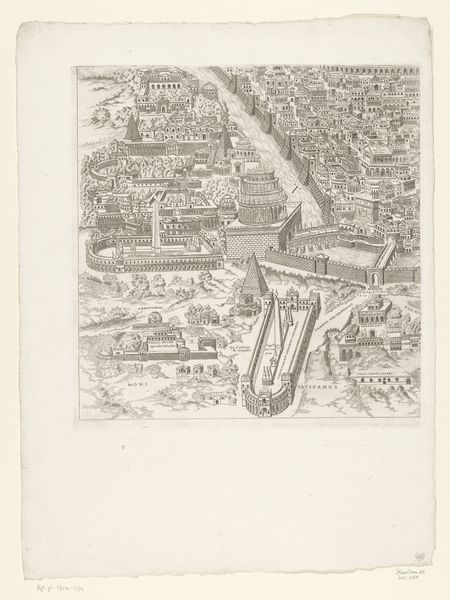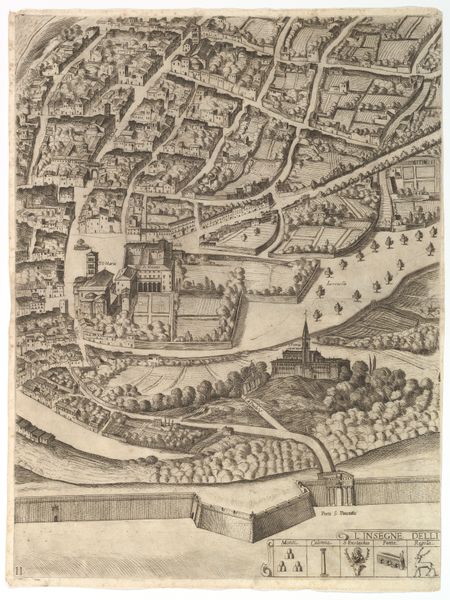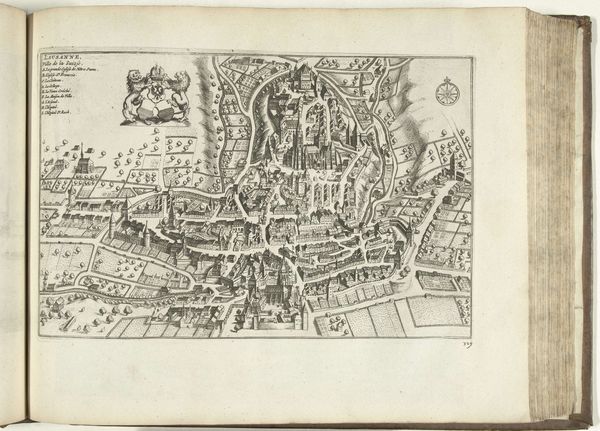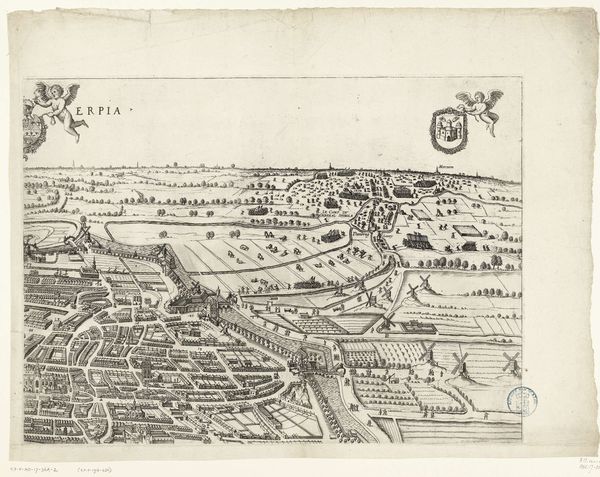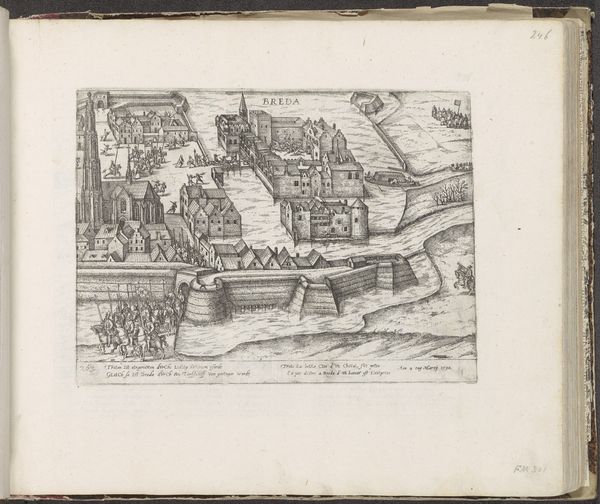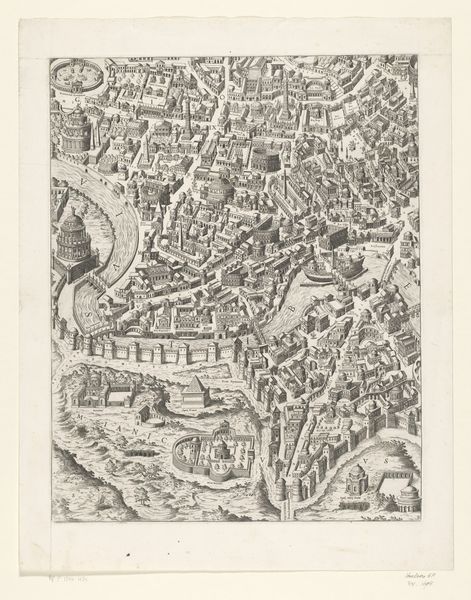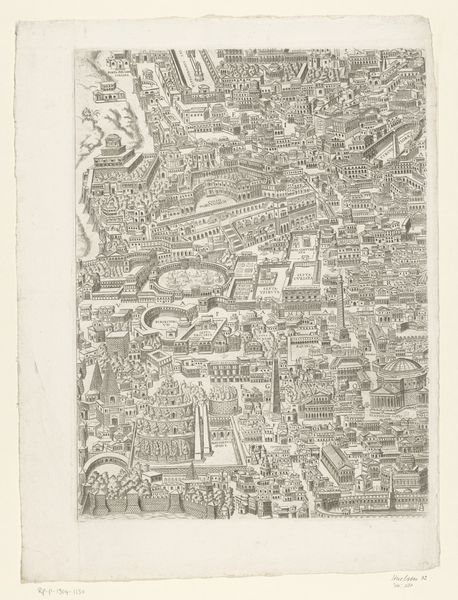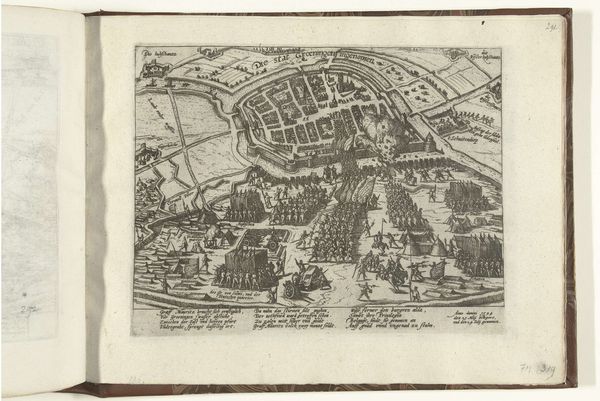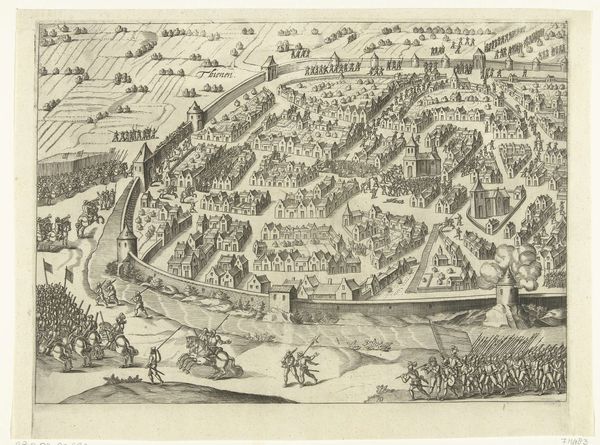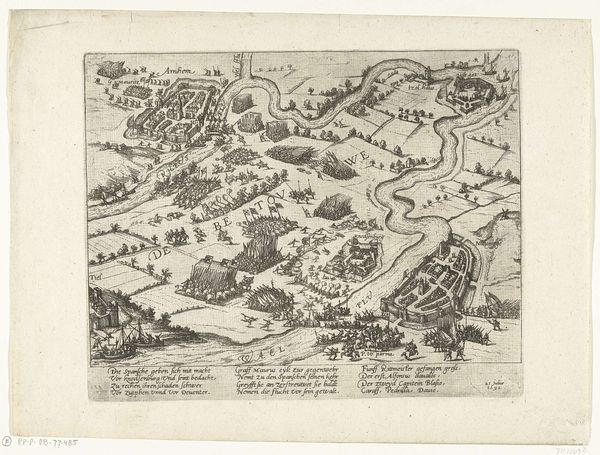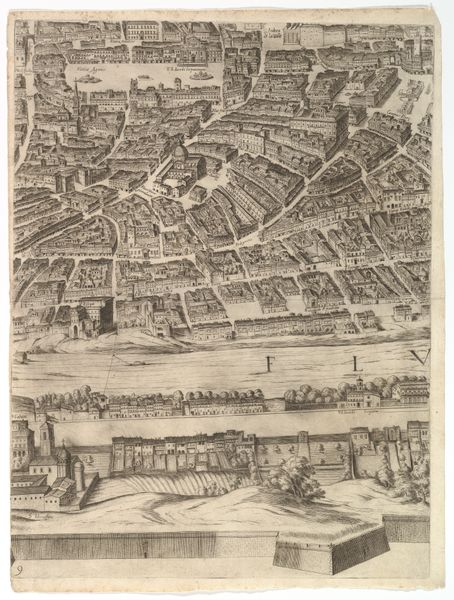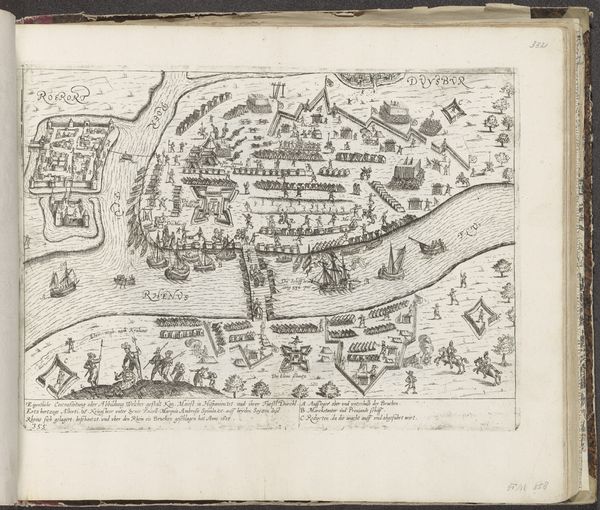
print, engraving
# print
#
pen sketch
#
pencil sketch
#
old engraving style
#
11_renaissance
#
geometric
#
ancient-mediterranean
#
line
#
cityscape
#
history-painting
#
engraving
Dimensions: height 519 mm, width 363 mm
Copyright: Rijks Museum: Open Domain
Curator: What strikes you first about this incredibly detailed rendering? Editor: It's a dense, almost overwhelming composition. The line work is intricate, but also quite rigid. The sheer volume of architectural forms presses in from all sides. It's impressive and imposing. Curator: Indeed. This is a print entitled "Plattegrond van Rome in de Romeinse tijd (vijfde deel)," created between 1639 and 1691. The artist was \u00c9tienne Dup\u00e9rac. Dup\u00e9rac aimed to reconstruct ancient Rome during a period of intense fascination with classical antiquity. Prints like these served not only as documentation but also as a form of cultural and political commentary, reflecting Rome's enduring significance. Editor: The way Dup\u00e9rac uses line—the cross-hatching, the varying thicknesses—really defines the forms. Note the shadows created and how this gives the buildings volume. The contrast amplifies the overall sense of grandeur, even in this miniature format. The organization seems somewhat schematic, prioritizes clarity over a truly naturalistic perspective. Curator: Precisely. This isn’t just about visual accuracy. Dup\u00e9rac offers us Rome reimagined. The inclusion of detailed Latin labels points to the educated elite. The artist reminds viewers that Renaissance Rome inherited a powerful legacy, positioning the city and, by extension, the papacy, as a direct continuation of the Roman Empire. It reinforces cultural authority. Editor: Looking at it, one could argue it is also designed for use, like a blueprint; although from our viewpoint in the present it seems distant due to the lack of figures. One wonders, could this rigidity and organization perhaps tell us about power and its exertion, too? Curator: That's a fascinating way to put it. Dup\u00e9rac used this depiction of ancient Rome to negotiate the political present, solidifying the city's place in a longer historical narrative. Editor: A grand visual statement about permanence, even when rendered in something as ephemeral as ink on paper. The artist clearly saw the artistic qualities inherent in cartography. Curator: Absolutely. It leaves me considering how meticulously Dup\u00e9rac merged historical reconstruction with artistic vision in this map of power. Editor: And for me, it's the paradox of using such rigid form to contain such expansive history that sticks with me.
Comments
No comments
Be the first to comment and join the conversation on the ultimate creative platform.
